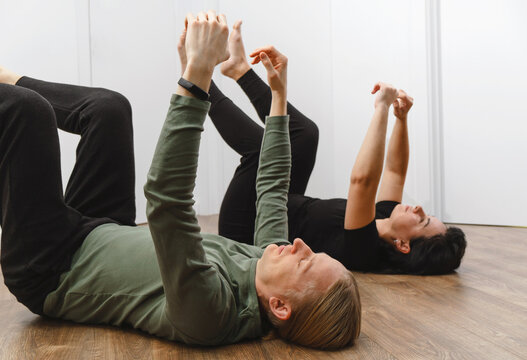Introduction: Unlocking the Secrets of the Feldenkrais Method
Ever wondered if there’s a secret hack to move more freely and feel better without intense workouts? In this article, we’ll dive into what the F. Method is all about, how it stacks up against yoga, the exercises involved, how it works, its benefits, and some criticisms you might want to consider.

Yoga vs. Feldenkrais: What’s the Deal?
While both yoga and the Feldenkrais Method aim to enhance physical well-being, they take different routes. Yoga focuses on static postures and flowing sequences, emphasizing flexibility, strength, and mindfulness through a blend of physical poses, breathing exercises, and meditation.
In contrast, the Feldenkrais Method revolves around Feldenkrais movements that are typically slow and gentle, focusing on increasing awareness of how you move. The goal is to re-educate the nervous system for better movement efficiency and ease. Think of yoga as the intense workout and Feldenkrais as the subtle yet powerful undercurrent.
10 Feldenkrais Exercises
A typical Feldenkrais exercise might seem deceptively simple. For instance, you might lie on the floor and explore small, mindful movements like tilting your head or rolling your pelvis. The key is to move slowly and with awareness, paying attention to the sensations in your body and how your movements affect your overall posture and comfort.
1. Body Scan
Begin by lying down comfortably. Close your eyes and bring your attention to different parts of your body, starting from your toes and moving up to your head. Notice any areas of tension or discomfort. This exercise helps increase body awareness and reduce muscular tension.
2. Interlacing Fingers
Sit or stand comfortably. Interlace your fingers and gently move your hands and arms in different directions. Explore the range of motion and notice any restrictions or tensions. This exercise helps improve flexibility and coordination.
3. Head and Eyes
Sit or lie down comfortably. Slowly and mindfully move your head and eyes in various directions, such as looking side to side, up and down, or making circular movements. This exercise helps improve neck mobility and coordination.
4. Ear to Shoulder
Sit or stand comfortably. Gently tilt your head to bring one ear towards the shoulder, exploring the range of motion and noticing any tensions or restrictions in the neck and shoulders. This exercise helps release tension and improve neck flexibility.
5. Arms in Rotation
Sit or stand comfortably. Rotate your arms in different directions, such as making small circles or figure-eights. Pay attention to the movement and any areas of tension or restriction. This exercise helps improve shoulder mobility and coordination.
6. Pelvic Movements
Down on your back with your knees bent. Gently rock or tilt your pelvis in different directions, such as forward and backward, side to side, or making circular movements. This exercise helps improve pelvic mobility and overall spinal flexibility.
7. Rocking Movements
Lie down on your back with your knees bent. Gently rock your body back and forth or from side to side. These movements can help release tension and improve overall body awareness.
8. Breathing Exercises
Sit or lie down comfortably. Bring your attention to your breath, noticing the natural rhythm and flow. Try coordinating your movements with your breath, such as inhaling while raising your arms and exhaling while lowering them. This exercise helps improve respiratory function and relaxation.
9. Functional Integration
In a one-on-one session with a practitioner, you might be guided through specific movements tailored to your needs. For example, a practitioner might help you explore more efficient ways of sitting, standing, or walking by gently guiding your movements and providing feedback.
10. Experimenting with Lifting Your Arm
Lie on your side with both arms extended in front of you. Slowly lift one arm, paying close attention to how your shoulder, spine, and pelvis move in response. Explore different ways of lifting your arm to find the most comfortable and efficient movement.
How the Feldenkrais Method Works
This method works on the principle of neuroplasticity, which is the brain’s ability to reorganize itself by forming new neural connections. Through mindful movement, the method aims to break habitual movement patterns and develop new, more efficient ways of moving.
During a Feldenkrais movement session, the practitioner guides you through gentle exercises while encouraging you to focus on the process and sensations. This mindfulness helps create a deeper awareness of your body, leading to improved movement and function over time.
Benefits of Feldenkrais Method
The method offers a myriad of benefits, making it a worthwhile addition to your wellness routine. Here’s what you can expect:
- Improved Mobility: Enhanced flexibility and range of motion.
- Pain Relief: Reduced chronic pain and tension.
- Better Posture: Improved alignment and balance.
- Increased Body Awareness: Greater understanding of how your body moves.
- Stress Reduction: A more relaxed and mindful approach to movement.
Criticisms and Limitations
What to Watch Out For
While the Feldenkrais Method has numerous proponents, it’s not without its criticisms and limitations. Some of the common points of contention include:
- Lack of Scientific Evidence: Some critics argue that there is limited empirical evidence supporting the method’s effectiveness.
- Subjectivity: The success of the method can vary greatly from person to person, making it hard to measure its overall efficacy.
- Time-Consuming: It requires patience and consistency, which might be a barrier for those looking for quick fixes.
Conclusion
In a world full of high-intensity workouts and fast-paced living, the Feldenkrais Method offers a refreshing, gentle alternative. By focusing on mindful movement and body awareness, it can help improve your mobility, reduce pain, and enhance your overall quality of life. So, next time you’re scrolling through the latest meme trends, remember this: “Why be moody when you can move smoothly?” Give the Feldenkrais Method a try and see how it can subtly transform your life.
We recommend that you read The Truth About Somatic Exercise for Weight Loss & Unveiling the Impacts of Social Media on Mental Health
